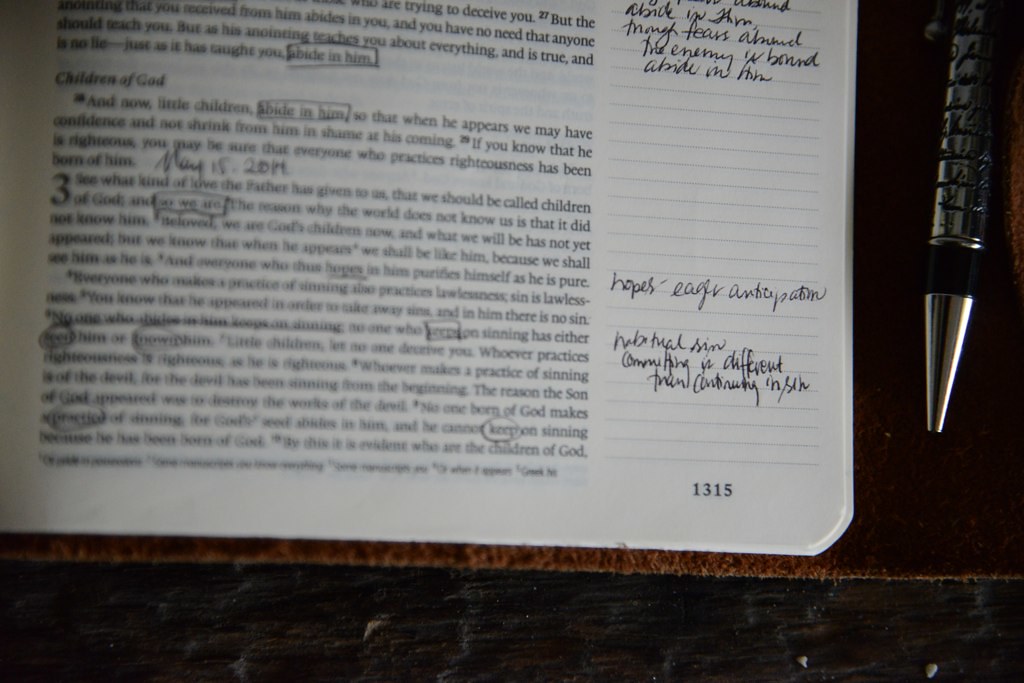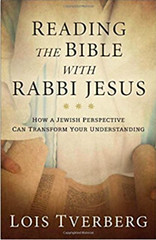New year, and new Bible reading plans and Lois Tverberg knows the treasures that await readers willing to learn how to read the Bible through Jewish eyes. By helping us understand the Bible as Jesus and His first-century listeners would have, she bridges the gaps of time and culture in order to open the Bible to us readers this new year. It’s a grace to welcome Lois to the farm’s front porch today…
Years ago, I signed up for a summer Hebrew course in Israel so that I’d be able to absorb the sights and sounds of the land as I studied.
The class was held at a retreat center a few miles outside Jerusalem, and everywhere you looked you could see evidence of the ancient Israelites.
We’d meet for class all morning, and then the afternoons were dedicated to homework and review.
Each day after lunch I’d make a point of hiking into the countryside and doing my homework under a tree, so that I could enjoy the hoo-hoo-hoot of the mourning doves and the scent of the cedar trees wafting in the breeze.
These terraced limestone hillsides had been farmed by Israelites thousands of years earlier.
A person didn’t need to look far to find an ancient basin hewn into the rock where a farmer had once stomped his grapes to press out juice for wine, or a pottery shard from a water jug hefted by a peasant girl in King David’s time.
Biblical reminders were everywhere.
I could just imagine the characters alive around me once again.
Every day as I headed out after lunch for my favorite tree, I’d walk past a group of college students who were also in my class.
They’d cluster tightly in a corner of the air-conditioned reception office, where they’d hang out until supper, hovering over their laptops.











After they ate, they’d beeline right back there again. Pretty much every waking hour, that little huddle would convene and glue itself to the chairs.
Why? Because this was the one spot at the retreat center where wireless internet was accessible. That clique of kids spent the whole summer cruising online and emailing friends at home.
What a tragedy to travel all the way to that fascinating, ancient land, to walk right on its very soil every day, but never once actually “be” there.
I’m sure they had the same interest in biblical studies I had, and they had spent as much money to come all this way, but a golden opportunity was passing them right on by.
This brings to mind an interesting rabbinic comment on Exodus 24:12. When God called Moses up to Mount Sinai to receive the tablets of law, what God said, literally, was, “Come up to me on the mountain and be here.”
This seems oddly repetitive. If Moses comes up the mountain, wouldn’t he already be there?
Translators interpret the text as simply saying that Moses should “wait there.” One nineteenth century rabbi, however, spun a lovely sermon out of the Bible’s intriguing choice of words, pointing out that there is, in fact, such a thing as going to a place and not actually being there.
He commented, If a person exerts himself and ascends to the summit, it is possible to reach it, while not being there. He stands on the summit of the mountain, but his head is somewhere else.
It’s entirely possible for a person to expend a great deal of energy getting to a destination, yet arrive with their head and thoughts remaining at the original point of departure.
The rabbi imagined that God was telling Moses not only to ascend the mountain but to be there fully, with complete attention and concentration, leaving behind all of his extraneous thoughts.
On the momentous occasion of the giving of the covenant, God wanted Moses to be fully present, in body, mind, and spirit.
I find this very helpful advice for reading the Bible: As you read, do your best to be there.
In our cellphone-saturated world, some of us need to go into airplane mode and detox awhile so our heads quit buzzing, just so we can think straight.
As wise as this advice is, another aspect of “being there” is an even bigger problem for us.
We may be aware of historical differences but we don’t think in terms of “being there” with the original audience. The Scriptures are meant for us to read but they were not written to our modern world.
God spoke so that the ancient world would understand, as they looked at life through different lenses.
If we want to empathize with how they thought and approached life, we need to know more about their culture.
It could become a new year project to continually refine our understanding of God’s Word in terms of what it meant in its setting and then consider the implications for what it means today — this new year.
Because, really:
“The best plan is always Plan Be: Really Be — wherever you really are.
Really be wherever you are, and really be present to the gift of now, and really be given to God and people because this is how you become love.”*
Lois Tverberg has been speaking and writing about the Jewish background of Christianity for the past twenty years. Her passion is to translate the Bible’s ancient setting into fresh insights that deepen and strengthen Christian faith. A former college professor, Lois writes from her home in Holland, Michigan.
Reading the Bible with Rabbi Jesus is a guide to more culturally authentic Bible study. The book explores big-picture ideas that are lost on modern readers and the powerful claims that Jesus made in a very Jewish way. By helping readers grasp the perspective of His original audience, they are equipped to read the Bible in ways that deepen their understanding and enrich their lives. By opening our eyes to the way Middle Eastern people would have understood Jesus, Lois Tverberg takes us on a journey that will deepen our love of this very Jewish book, enriching our lives in the process.
[ Our humble thanks to Baker for their partnership in today’s devotion… and * credit & Israel photos: Ann V. ]








